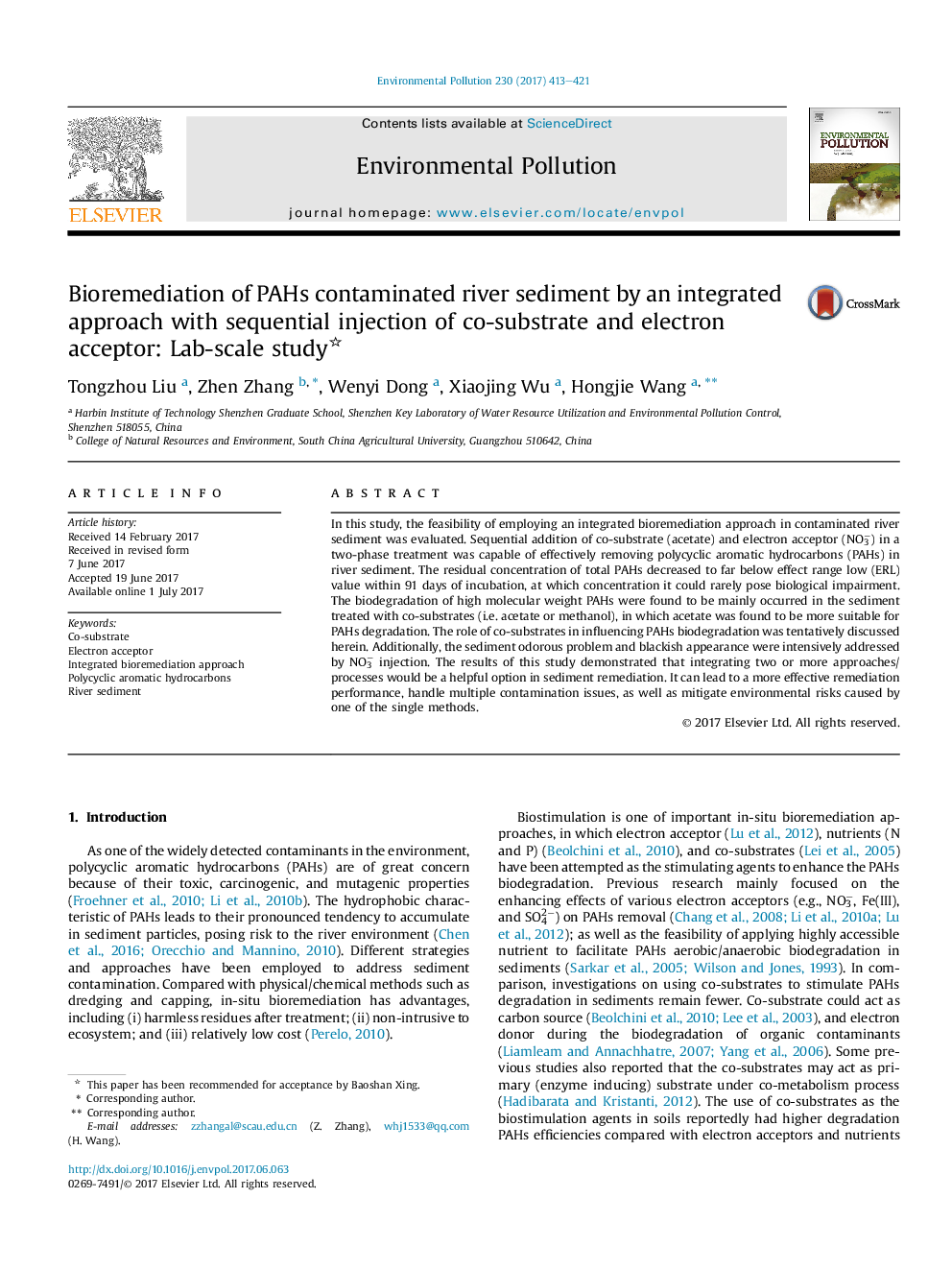| Article ID | Journal | Published Year | Pages | File Type |
|---|---|---|---|---|
| 5748687 | Environmental Pollution | 2017 | 9 Pages |
â¢Sequential addition of acetate and NO3â removed PAHs and mitigated sediment odor.â¢Acetate is a suitable co-substrate used for PAHs degradation in river sediment.â¢NO3â Injection was effective for sediment odor and blackish appearance mitigation.â¢Integrated method is suggested in complicated real case with multi-remedial target.
In this study, the feasibility of employing an integrated bioremediation approach in contaminated river sediment was evaluated. Sequential addition of co-substrate (acetate) and electron acceptor (NO3â) in a two-phase treatment was capable of effectively removing polycyclic aromatic hydrocarbons (PAHs) in river sediment. The residual concentration of total PAHs decreased to far below effect range low (ERL) value within 91 days of incubation, at which concentration it could rarely pose biological impairment. The biodegradation of high molecular weight PAHs were found to be mainly occurred in the sediment treated with co-substrates (i.e. acetate or methanol), in which acetate was found to be more suitable for PAHs degradation. The role of co-substrates in influencing PAHs biodegradation was tentatively discussed herein. Additionally, the sediment odorous problem and blackish appearance were intensively addressed by NO3â injection. The results of this study demonstrated that integrating two or more approaches/processes would be a helpful option in sediment remediation. It can lead to a more effective remediation performance, handle multiple contamination issues, as well as mitigate environmental risks caused by one of the single methods.
Graphical abstractDownload high-res image (269KB)Download full-size image
